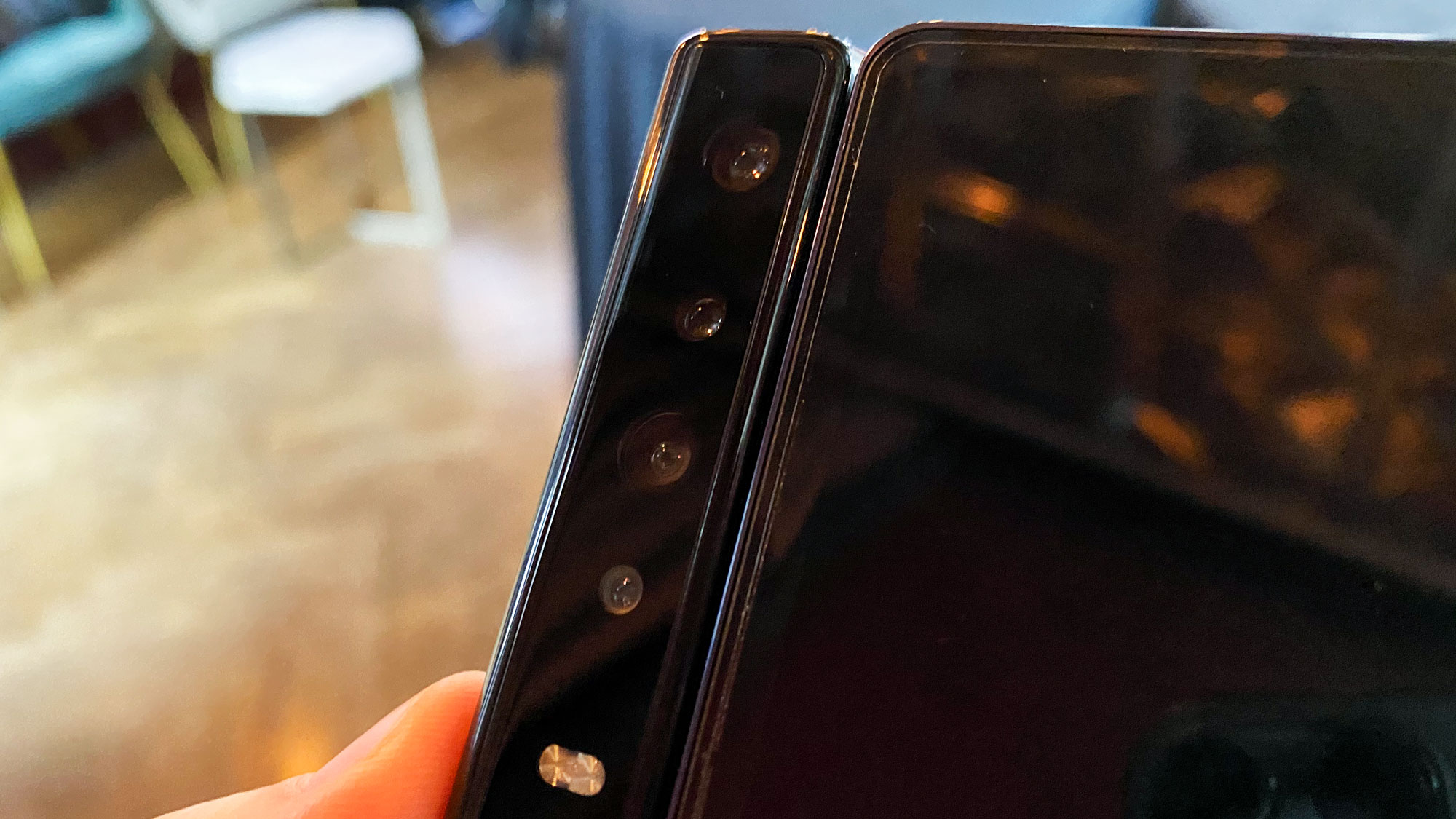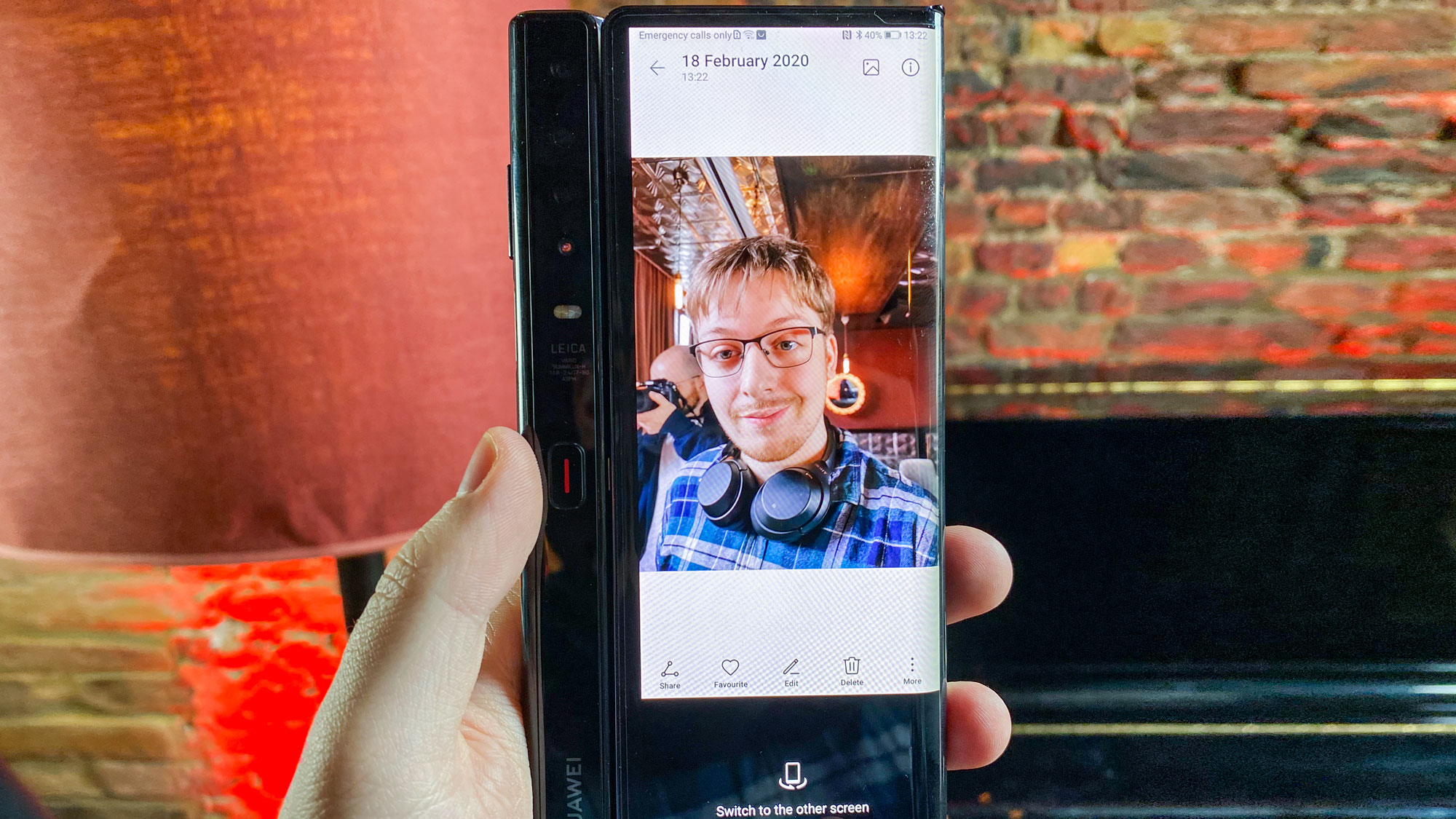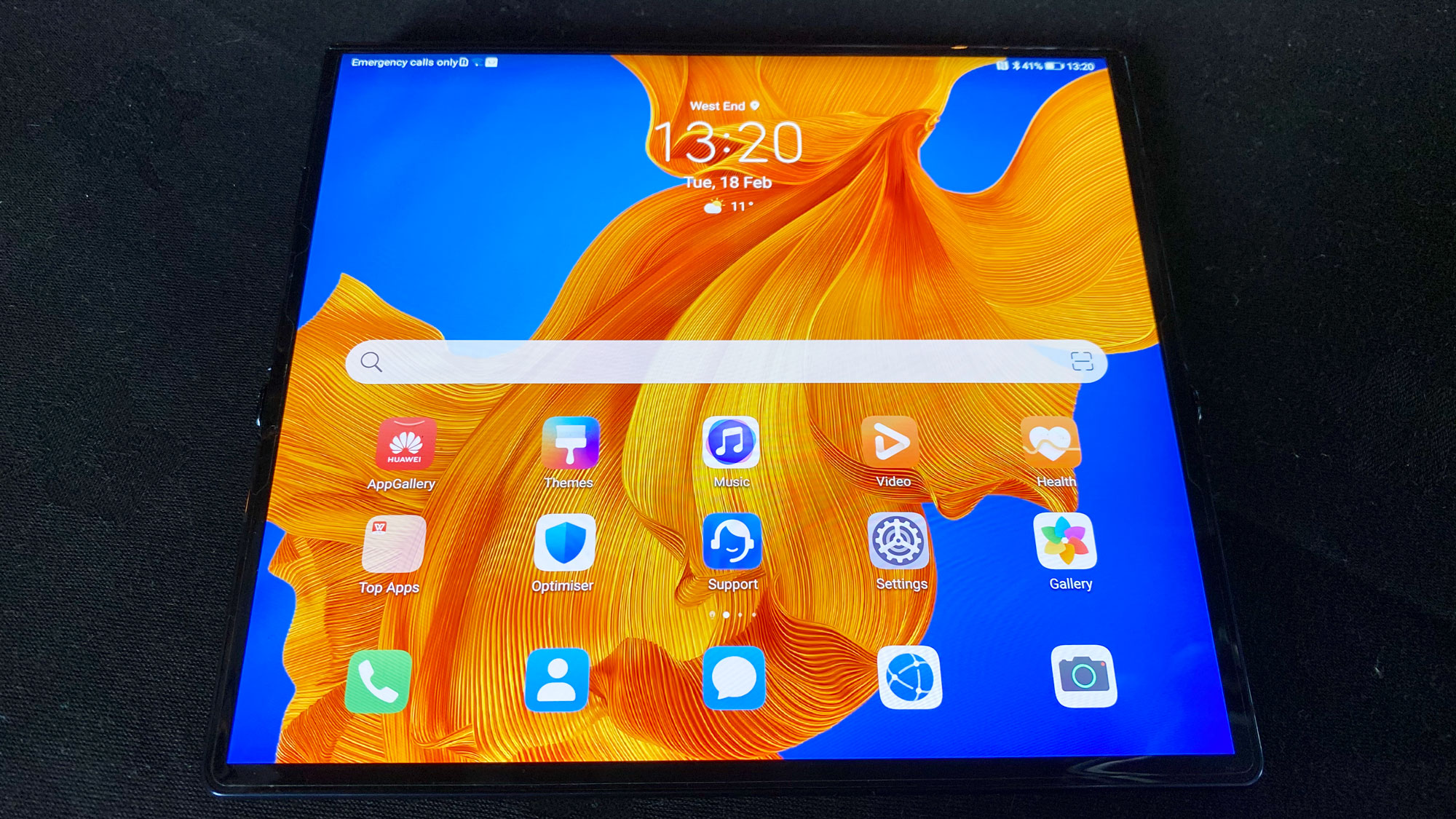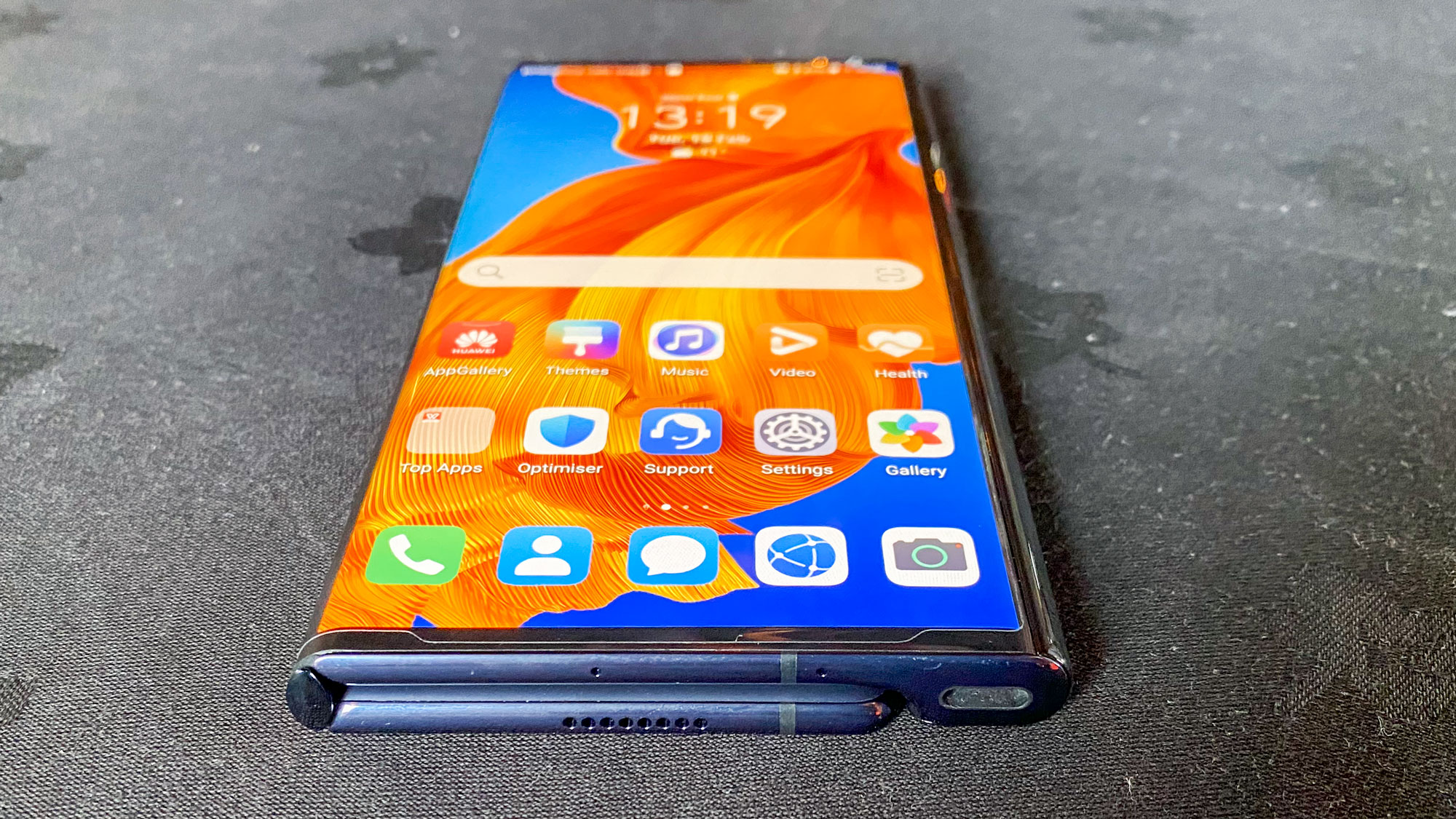Early Verdict
Pros
- +
Reinforced folding mechanism
- +
Leica-lensed cameras
- +
Bar design feels secure to hold
- +
5G compatible
- +
App expansion and multi-tasking
Cons
- -
Doesn’t feel good to fold and unfold
- -
Likely no US availability
- -
Likely still very expensive
- -
No Google apps
Why you can trust Tom's Guide
Last year, we got a glimpse at the Mate X, Huawei’s first foldable phone. The Chinese phone maker is following that up with a revised version called the Huawei Mate Xs, introducing a few small but welcome changes to the foldable device. But will it be enough to make the latest Mate X any more practical for most smartphone users?
- New Huawei tablet: Huawei MatePad Pro 5G review
- Huawei Mate 30 Pro review
- The hottest foldable right now: Samsung Galaxy Z Flip review
Huawei Mate Xs price and availability
The original Mate X cost $2,499 ($2,704/£2,095), making it the most expensive phone in the already extortionate foldables segment, for a single 8GB RAM/512GB storage variant.
At Huawei's press conference launching the phone, Huawei CBG CEO Richard Yu said this phone will be sold worldwide from March 2020. Since the first Mate X never made it to the UK (let alone the US thanks to the US government’s feud with Huawei), we’re looking forward to seeing this fresh take on the foldable phone outside of China.

Huawei Mate Xs display and design
The shape of the Mate Xs is immediately familiar, as it employs the so-called “falcon wing” design that wraps the screen around the outside of the folding frame unlike almost every other foldable we’ve yet seen. (The Royole Flexpai does something similar, but that phone is less refined than anything Huawei makes.)
The hinge mechanism has been significantly improved since the Mate X, the most obvious physical change being the addition of round caps on either end of the hinge. These look a little like removable styluses, but they provide extra shielding to protect the 100-part hinge.
Having folded and unfolded the Huawei Mate Xs a few times during my hands-on session, I can say it does feel better than the Samsung Galaxy Fold, although that isn’t saying much. There’s a nice pop when you open the phone fully, and a satisfying click when you shut it again, but in between those two points you have what feels like little vibrations caused by the grinding of many tiny gears. I wasn’t afraid of the phone breaking into two on me after a few days of use, but the feeling doesn’t match the luxury you’d expect from this kind of ultra-premium, sky-high priced device.
The Huawei Mate Xs display is much the same as it was before. Folded up, you have a front 6.6-inch display and a rear 6.4-inch display, which extend to combine into an 8-inch screen. Huawei seems quite proud of how skinny the device is, boasting about its 5.4mm depth across the unfolded screen. The bar on the side of the phone, which also acts as a handle, measures 11mm deep, which is also the depth of the phone when closed.
On the bar, there’s still the recessed power button which also contains a fingerprint scanner for biometric security, as well as the release button that lets you unfold the phone. With this bar, the Mate Xs feels fairly natural and secure to hold despite the fact that the shape is quite unique. I can think of no other phone with this kind of chassis. And a secure hold is exactly what you want with a phone that has an enormous and fragile plastic display that costs thousands of dollars.

Huawei Mate Xs cameras
A quartet of camera sensors also live within the bar on the Mate Xs, and feature the same Leica-tuned lenses that appear on Huawei’s P30 Pro and Mate 30 Pro. These consist of a 40MP main sensor, a 3x optical, 30x digital 8MP telephoto sensor, a 16MP wide sensor (with a 2.5cm macro photo mode), and finally a 3D time-of-flight camera for depth sensing duties.
There is no selfie camera on the Mate Xs — instead you just turn the phone around so the cameras face you, which gives you more freedom than you’re used to with normal selfies such as options for ultra-wide shots, TOF-enhanced bokeh, and optical zoom enhancement of your and your friends’ facial features, if you’re feeling brave. If the Mate 30 Pro and P30 Pro are anything to go by, the Mate Xs might be the best foldable for photography around, but we’ll need to perform some more thorough testing outside of Huawei’s demo room.
Huawei Mate Xs software

On the software side, the Mate Xs uses EMUI 10, based on the open-source version of Android 10 (so still no Google apps I’m afraid), but with a few new enhancements to help take advantage of the extra screen space and folding-unfolding capabilities. First off is “app expansion”, which lets you see multiple views of certain compatible apps. For example, when opening the Booking.com app, you can have a list of search results on the left while you look at individual entries and photos on the right, making your search for a hotel easier than it would be on a more conventional smartphone screen. You can also multi-task with up to three apps — two docked side-by-side with a third floating on top — which will allow you to coordinate between apps with amazing ease when you’ve got the Mate Xs fully open.

Huawei Mate Xs 5G
Like the first Mate X, the Mate Xs is 5G-compatible, except this time the 5G connectivity is built into the Kirin 990 chip rather than as the separate Balong 5000 modem. Huawei promises this will support both current and future 5G network technology, (read sub-6 and mm-Wave) so you won’t be left stranded by your network provider changing their infrastructure.
Huawei Mate Xs battery and charging
The Mate X retains its total 4,500 mAh battery capacity, split across two separate batteries. It charges from a 55W fast charger, included in the box, which Huawei claims will fill the phone to 85% full in just 30 minutes. That’s faster than almost any other phone charger I’ve come across. Because of all that heat being distributed across both halves of the phone, Huawei has introduced a new “flying fish” cooling layer that spans the whole device, including the hinge. You can’t see it from the outside at all, but having seen the graphics used by Huawei in its presentation, I’m dying to see a teardown of the Mate Xs so I can have a look in real life.

Huawei Mate Xs review: early verdict
Huawei is known for its excellent engineering, but we’ll have to see whether even its skills are up to the task before them here. Although I'm confident that the Mate Xs will deal with the strains of everyday use better than other foldables, that doesn't necessarily mean it will manage as well as a standard smartphone. The extortionate price means this will not be a phone for the masses, which in a way is good. Most people won't want to do without Google apps.
However, the software features in the Mate Xs seem to make excellent use of the phone’s folding abilities, and the Leica-lensed cameras and 5G-enabled CPU should mean you get processing, network and photo performance worthy of the pricetag. I’m looking forward to trying the Mate Xs out and seeing if the extra waiting time was worth it, and if its major flaws can be forgiven.

Richard is based in London, covering news, reviews and how-tos for phones, tablets, gaming, and whatever else people need advice on. Following on from his MA in Magazine Journalism at the University of Sheffield, he's also written for WIRED U.K., The Register and Creative Bloq. When not at work, he's likely thinking about how to brew the perfect cup of specialty coffee.

